History
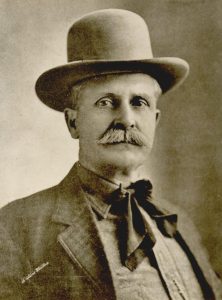 Unfortunately, there are among us, people who are corrupt and ruthless, and sometimes, things happen because of corruption, anger, or even stupidity. William Tilghman was born in Fort Dodge, Iowa on July 4, 1854, at the height of the “Wild West” era. He was a man who wanted something more, so at 16 years old, he moved west. As sometimes happened, men who went west, toyed with the wild life that was brought about by the lawless area. Tilghman was no different. He fell in with a bad crowd of young men who stole horses from the Indians. After several narrow escapes with angry Indians, Tilghman decided that rustling was too dangerous and settled in Dodge City, Kansas, where he briefly served as a deputy marshal before opening a saloon. He was arrested twice for alleged train robbery and rustling, but the charges did not stick. It was a shaky start, but Tilghman gradually built a reputation as an honest and respectable young man in Dodge City. Before long, he became the deputy sheriff of Ford County, Kansas. Later, he was offered and accepted the job of the marshal of Dodge City…a real life Matt Dillon, from Gunsmoke.
Unfortunately, there are among us, people who are corrupt and ruthless, and sometimes, things happen because of corruption, anger, or even stupidity. William Tilghman was born in Fort Dodge, Iowa on July 4, 1854, at the height of the “Wild West” era. He was a man who wanted something more, so at 16 years old, he moved west. As sometimes happened, men who went west, toyed with the wild life that was brought about by the lawless area. Tilghman was no different. He fell in with a bad crowd of young men who stole horses from the Indians. After several narrow escapes with angry Indians, Tilghman decided that rustling was too dangerous and settled in Dodge City, Kansas, where he briefly served as a deputy marshal before opening a saloon. He was arrested twice for alleged train robbery and rustling, but the charges did not stick. It was a shaky start, but Tilghman gradually built a reputation as an honest and respectable young man in Dodge City. Before long, he became the deputy sheriff of Ford County, Kansas. Later, he was offered and accepted the job of the marshal of Dodge City…a real life Matt Dillon, from Gunsmoke.
Tilghman was one of the first men into the territory when Oklahoma opened to settlement in 1889, and he became a deputy US marshal for the region in 1891. In the late 19th century, lawlessness was still very much a part of Oklahoma. Tilghman helped to bring order the to area by ridding Oklahoma by capturing some of the most notorious bandits of the day. While locking up many criminals, Tilghman, nevertheless, managed to earn a well-deserved reputation for treating even the worst criminals fairly and protecting the rights of the unjustly accused. Any man, who found himself in Tilghman’s custody, knew he was safe from angry vigilante mobs, 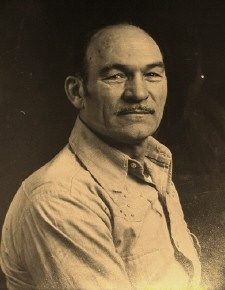 because Tilghman had little tolerance for those who took the law into their own hands. In 1898, a wild mob lynched two young Indians who were falsely accused of raping and murdering a white woman. Tilghman arrested and secured prison terms for eight of the mob leaders and captured the real rapist-murderer.
because Tilghman had little tolerance for those who took the law into their own hands. In 1898, a wild mob lynched two young Indians who were falsely accused of raping and murdering a white woman. Tilghman arrested and secured prison terms for eight of the mob leaders and captured the real rapist-murderer.
In 1924, after serving a term as an Oklahoma state legislator, making a movie about his frontier days, and serving as the police chief of Oklahoma City, Tilghman might well have been expected to quietly retire. However, it was the height of the Prohibition era, and the old lawman was unable to hang up his gun. He still felt a calling to keep law and order in his town. He accepted a job as city marshal in Cromwell, Oklahoma. On November 1, 1924, William Tilghman, who was known to both friends and enemies alike as “Uncle Billy” was murdered by a corrupt prohibition agent who resented Tilghman’s refusal to ignore local bootlegging operations. The Prohibition officer was drunk, and in his anger, made the worst mistake of his life.
 Every year…like clockwork, parents dress their children up in costumes, and the annual tradition of children roaming the neighborhoods, knocking on doors, and asking for treats…with the threat of tricks, if the “blackmail” is not paid…begins. It’s Halloween, of course. These days, not as many children really understand how the whole thing is supposed to work. They just see it as a day to gather up as much candy as possible. I read somewhere that children consume, on average, 7,000 calories worth of candy…or the equivalent of almost 11 Burger King Whoppers, without cheese, and not the new meatless version, of course. It’s a good thing that most kids are very active, or that many calories could be bad. And that isn’t even considering the sugar high that the parents will have to deal with. Try putting that child to bed after all that, and you’ll find that it’s going to be a long night. The best
Every year…like clockwork, parents dress their children up in costumes, and the annual tradition of children roaming the neighborhoods, knocking on doors, and asking for treats…with the threat of tricks, if the “blackmail” is not paid…begins. It’s Halloween, of course. These days, not as many children really understand how the whole thing is supposed to work. They just see it as a day to gather up as much candy as possible. I read somewhere that children consume, on average, 7,000 calories worth of candy…or the equivalent of almost 11 Burger King Whoppers, without cheese, and not the new meatless version, of course. It’s a good thing that most kids are very active, or that many calories could be bad. And that isn’t even considering the sugar high that the parents will have to deal with. Try putting that child to bed after all that, and you’ll find that it’s going to be a long night. The best  you can hope for is that the day falls on a Friday, so they don’t have to get up for school the next day…not the case this year, unfortunately.
you can hope for is that the day falls on a Friday, so they don’t have to get up for school the next day…not the case this year, unfortunately.
So, with all the negative aside, the costumes people come up with are usually very cute. I prefer the costumes that don’t focus on the gruesome and horrific, but there are always a few of those. This year, with all my grandchildren grown up, we will only have our little great granddaughter heading out to see what she can come home with. At just 17 months, she will most likely only be going a few places, and since she is so little, she isn’t as totally addicted to candy as she will most likely become in future years. Nevertheless, I’ve never seen her turn down a treat either.
I remember Halloweens past, when my grandchildren were little. They couldn’t wait to get out there, and they 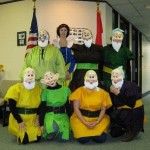 really preferred if their parents didn’t stand around and talk. After all, they had rounds to make, and it wasn’t getting any earlier. My grandchildren, Chris Petersen, Shai Royce, Caalab Royce, and Josh Petersen, always had the cutest costumes. I suppose I might be a bit biased, but I don’t care. I’m sure every parent and every grandparent feels the same way about their own little ones. It’s our prerogative!! Our little ones never had any tricks up their sleeves, that I knew of, but I do recall the year when I, as a little kid, was handed a little bar of soap, by my mother, Collene Spencer. It was my “trick” and I was only asked by one person, what trick I had up my sleeve. When I showed him the soap, he let out a great big guffaw!! He had no idea that I would even know what he meant. He said that it made his whole day!! Happy Halloween everyone!! Be safe out there!!
really preferred if their parents didn’t stand around and talk. After all, they had rounds to make, and it wasn’t getting any earlier. My grandchildren, Chris Petersen, Shai Royce, Caalab Royce, and Josh Petersen, always had the cutest costumes. I suppose I might be a bit biased, but I don’t care. I’m sure every parent and every grandparent feels the same way about their own little ones. It’s our prerogative!! Our little ones never had any tricks up their sleeves, that I knew of, but I do recall the year when I, as a little kid, was handed a little bar of soap, by my mother, Collene Spencer. It was my “trick” and I was only asked by one person, what trick I had up my sleeve. When I showed him the soap, he let out a great big guffaw!! He had no idea that I would even know what he meant. He said that it made his whole day!! Happy Halloween everyone!! Be safe out there!!
 In this technological age, everyone has heard of the internet…even those who don’t know how to use it. It is thought to be the most advanced way to access information, and that is true. People don’t have to even leave their homes to have access to information, products, email, or media…even social media. It was an amazing invention, and some might say it was a time hog. It was the invention of all time, but…it wasn’t the first of it’s kind.
In this technological age, everyone has heard of the internet…even those who don’t know how to use it. It is thought to be the most advanced way to access information, and that is true. People don’t have to even leave their homes to have access to information, products, email, or media…even social media. It was an amazing invention, and some might say it was a time hog. It was the invention of all time, but…it wasn’t the first of it’s kind.
On October 29, 1969, the Advanced Research Projects Agency Network (ARPANET) an early packet-switching network and the first network to implement the TCP/IP protocol suite was presented. Both of those technologies became the technical foundation of the Internet. The ARPANET was initially founded by the Advanced Research Projects Agency (ARPA) of the United States Department of Defense. It seems fitting to me that the Department of Defense would be the first ones to access such instantaneous information sources. Many people and even government agencies might have thought that the average person had no need to be able to access such information, but that would be wrong. Now it’s vital.

Paul Baran, Donald Davies, Leonard Kleinrock, and Lawrence Roberts came up with the concepts, and designed the packet-switching methodology employed in the ARPANET. The TCP/IP communications protocols were developed for the ARPANET by Robert Kahn and Vint Cerf. They also incorporated concepts from the French CYCLADES project directed by Louis Pouzin. As the network development progressed, protocols for internetworking were developed by which multiple separate networks could be joined into a network of networks. Access to the ARPANET was expanded in 1981, when the National Science Foundation (NSF) funded the Computer Science Network (CSNET). In 1982, the Internet protocol suite (TCP/IP) was introduced as the standard networking software stack in the ARPANET. In the early 1980s, the NSF funded the establishment of national supercomputing centers at several universities, and provided network access and network interconnectivity with the NSFNET project in 1986. The ARPANET project was formally decommissioned in 1990,  after partnerships with the telecommunication industry paved the way of future commercialization of a new world-wide network…the Internet.
after partnerships with the telecommunication industry paved the way of future commercialization of a new world-wide network…the Internet.
I’m sure that, like the pre-windows DOS program, the ARPANET was quite a bit more primitive. Still, it was an amazing thing to be able to connect with people who were a good distance away from you, and pass data along to them. Of course, the only ones who had access were those in the network, but then when you think about it, if you don’t have internet access, you are out of the loop too, so I guess it is no different really. Most of us thought that the internet was a unique invention, but in reality, it was second in line.

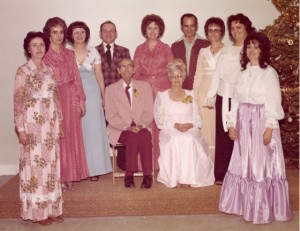 Where my Aunt Evelyn Hushman was the beginning of my grandma and grandpa, Hattie and George Byer’s large family, Aunt Sandy Pattan was the end. Between them were 17 years and 7 siblings. When Aunt Sandy arrived, my grandparents had a disagreement as to what her name would be. My grandfather wanted to name her Sonya (or maybe Sonja, we will never know, since the name lost), but my grandmother wanted to name her Sandra. They simply could not agree, so the decision was made for Grandpa to go home and tell the rest o the children about the birth, and let a majority rule vote of the children settle the dispute. So, Grandpa went home and told the children about their little sister. Then he told them about the name dispute. They were to decide. Trying as hard as he could to make Sandra sound as plain as he could and, Sonya sound like the most beautiful name in the world, Grandpa waited for the decision. He didn’t have to wait long. Almost the split second he said Sonya, the children all said, “Eeeeewwww!! Sonya!! No way!! We choose Sandra!!”
Where my Aunt Evelyn Hushman was the beginning of my grandma and grandpa, Hattie and George Byer’s large family, Aunt Sandy Pattan was the end. Between them were 17 years and 7 siblings. When Aunt Sandy arrived, my grandparents had a disagreement as to what her name would be. My grandfather wanted to name her Sonya (or maybe Sonja, we will never know, since the name lost), but my grandmother wanted to name her Sandra. They simply could not agree, so the decision was made for Grandpa to go home and tell the rest o the children about the birth, and let a majority rule vote of the children settle the dispute. So, Grandpa went home and told the children about their little sister. Then he told them about the name dispute. They were to decide. Trying as hard as he could to make Sandra sound as plain as he could and, Sonya sound like the most beautiful name in the world, Grandpa waited for the decision. He didn’t have to wait long. Almost the split second he said Sonya, the children all said, “Eeeeewwww!! Sonya!! No way!! We choose Sandra!!”
Poor Grandpa. The decision saddened him. He liked the name Sonya. Nevertheless, Grandpa was an honorable man. The name Sandra had been chosen, and Sonya was out. He would accept that. I’m sure Grandma was happy, and my Aunt Sandy has told me that she is thankful, because she doesn’t think she would have liked the name Sonya. Maybe not, but once a name is given, most people can’t imagine themselves as anyone else. People tend to fit the name given, whether it is unusual or common. I can’t imagine having an Aunt Sonya, but then that is because I have always had an Aunt Sandy. That’s who she is, and it’s as simple as that.
Aunt Sandy must have some of the name/heritage gene in her blood, because she is as curious as I am about things like family history, and name history. We like to know if a name came from way back in the family, was made up, or picked out of a book. It doesn’t really matter which one it is, it’s really about the search. Aunt 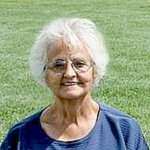
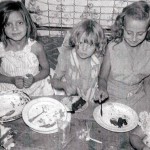 Sandy is a great teller of family stories. She remembers them in great detail. I could sit and listen to her all day. Many people don’t understand the importance of the family history, and people like Aunt Sandy and me, are important, because without someone to keep the stories alive, the family history could die, and that would be truly tragic. I’m grateful to have Aunt Sandy, who is still able to tell me the stories, so that when some of the kids in the family discover their interest, the story will still be there. Today is Aunt Sandy’s 74th birthday. Happy birthday Aunt Sandy!! Have a great day!! We love you!!
Sandy is a great teller of family stories. She remembers them in great detail. I could sit and listen to her all day. Many people don’t understand the importance of the family history, and people like Aunt Sandy and me, are important, because without someone to keep the stories alive, the family history could die, and that would be truly tragic. I’m grateful to have Aunt Sandy, who is still able to tell me the stories, so that when some of the kids in the family discover their interest, the story will still be there. Today is Aunt Sandy’s 74th birthday. Happy birthday Aunt Sandy!! Have a great day!! We love you!!
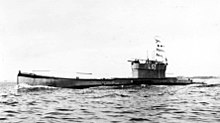 Over the years, ships that sailed the high seas, were faced with a number of perils, among them the biggest human danger there was…pirates. No area of the globe was particularly more dangerous than another, and no area was immune to attack, as was seen on October 19, 1927, when the Chinese steamer, SS Irene was on a voyage from Shanghai to Amoy with 258 passengers and crew. As she set out, she was taken over by pirates masquerading as passengers on that Wednesday. After boarding, the pirates quickly seized control of the ship and headed out to sea.
Over the years, ships that sailed the high seas, were faced with a number of perils, among them the biggest human danger there was…pirates. No area of the globe was particularly more dangerous than another, and no area was immune to attack, as was seen on October 19, 1927, when the Chinese steamer, SS Irene was on a voyage from Shanghai to Amoy with 258 passengers and crew. As she set out, she was taken over by pirates masquerading as passengers on that Wednesday. After boarding, the pirates quickly seized control of the ship and headed out to sea.
It was then that two L-class British submarines intercepted the vessel and demanded that they halt and surrender. The two submarines were based off Mendoza Island (now Shenggao Island) at the entrance of the bay. Upon their arrival, they had been ordered to split up. L4 went to patrol around the entrance of the bay and L5 was ordered to patrol within. It was at this point that they encountered the SS Irene. Pirates are a bull-headed group, and they aren’t afraid of very much. They are after all, outlaws, and that makes them a tough bunch. The pirates refused to surrender, and the submarines were ordered to fire. They fired two torpedoes into the ships hold. Even after being hit, the pirates continued to try to make it to shore, but they had been too badly damaged. Finally, they began to abandon ship. At this point, the ship stopped, but it was already beginning to sink. The British submarines then rescued the passengers and crew.
The Irene incident of 1927 was a significant event of the British anti-piracy operations in China during the first half of the 20th century. It was part of a British attempt to surprise the pirates of Bias Bay, about sixty miles from Hong Kong.  Royal Navy submarines were sent to stop the pirates, and the merchant ship SS Irene, of the China Merchants Steam Navigation Company, which had been taken over by the pirates on the night of October 19th was one if the first. The British were successful in thwarting the hijacking though they sank the ship. Sometimes, drastic measures must be taken in order to bring about the necessary changes. While we don’t hear about it as much, piracy still exists today. There may again come a time when drastic measures must be taken, and I know the authorities will do what has to be done.
Royal Navy submarines were sent to stop the pirates, and the merchant ship SS Irene, of the China Merchants Steam Navigation Company, which had been taken over by the pirates on the night of October 19th was one if the first. The British were successful in thwarting the hijacking though they sank the ship. Sometimes, drastic measures must be taken in order to bring about the necessary changes. While we don’t hear about it as much, piracy still exists today. There may again come a time when drastic measures must be taken, and I know the authorities will do what has to be done.

 No, I’m not talking of foods to eat when you are feeling depressed, although the Great Depression really did qualify as depressing. Nevertheless, as I was considering the days of the Great Depression, I wondered what foods the people had survived on, when money was scarce, and food was suddenly expensive…more so than these days, when you consider the lack of jobs and money. People were forced to re-evaluate their priorities and their food choices.
No, I’m not talking of foods to eat when you are feeling depressed, although the Great Depression really did qualify as depressing. Nevertheless, as I was considering the days of the Great Depression, I wondered what foods the people had survived on, when money was scarce, and food was suddenly expensive…more so than these days, when you consider the lack of jobs and money. People were forced to re-evaluate their priorities and their food choices.
It was at this point that foods like Bisquick, Good Humor ice cream bars, Kraft macaroni and cheese, Krispy Kreme doughnuts, Kool-Aid, Toll House chocolate chips, Ritz Crackers, and Spam appeared on the scene. They were inexpensive foods then, and they have never left us. To this day, some people call them “broke food.” In many ways, foods had to be more filling, more calorie laden, because you didn’t always get to eat as much as you wanted. That makes the calories important. Some foods became too pricey. Less expensive options on things became a must. Crisco was a less expensive option to butter, Oscar Meyer Wieners replaced more costly sausages, Maxwell House Sanka coffee was an option to whole bean coffees, Heinz Ketchup was used as the base for a simple tomato soup, Underwood Deviled Ham substituted fresh lunch meat, Carnation evaporated milk replaced fresh milk, Ground acorns became a substitute for coffee. People added chicory to extend the coffee supplies, while honey, molasses and corn sweeteners replaced sugar, because sugar was at a premium, and later on in World War II, it was rationed.
It wasn’t just the new foods that were strange, but rather what people made with some of them, that amazes me. Basically, foods changed from what we had known before, because fruits, vegetables, and meats weren’t as readily available. Things like meatless meatloaf and appleless apple pie appeared on the scene. Meatloaf became “anything” loaf…from meatless meatloaf made with everything from peanuts to raisins to liver loaf, families used their creativity and whatever was available to make this alternative to the weekly favorite. With a shortage of apples came the “mock apple pie” which substituted apples for crumbled crackers sprinkled with flavored syrup and cinnamon, all baked into a crust. The most famous of these recipes appeared on the back of the Ritz cracker box in 1934, the “Ritz mock apple pie” was an instant hit. Things like chipped beef on toast or waffles was also a staple, and one my mom, Collene Spencer picked up from her mom, Hattie Byer. Mom liked it so much that it was something we had from time to time. Basically, it used a little chipped beef and a lot of gravy. I can see how it would have been a staple in the Great Depression, because it was very filling. And of course, my personal favorite, and one I still love since my grandmother first made them for us, Potato Pancakes. Because of the wide availability and low cost of potatoes, Depression-era cooks used potatoes as substitutes in other dishes. Potato pancakes, made with grated potatoes cooked or fried in a pan, was a common dish at every meal. We loved them, and nobody made them like Grandma.
People foraged in their yards too. These days, many people drink Dandelion Tea or put Dandelion leaves in their salad. Of course, the dandelions we use today have to be carefully cultivated, because most of us try very hard to kill them when they spring up in our gardens. Weed killer would not make for “healthy” dandelions. Wild onions were also used, and were something I remember Mom telling us about. She loved them. Of course, people who knew about plants could forage for herbs that could be used for everything from seasoning to medicine. Most of us today don’t really know many of the herbs in the wild, although we might know them if we plant them from a seed.
Soups took on various new forms too. Mulligan Stew came about from those who were homeless, because it entailed putting in anything that was available. Some people actually went so far as to put lint in to make it more filling. “Tomato” soup even took on new forms, substituting Ketchup for tomato sauce. And they even managed to have dessert sometimes. Prune Pudding was founded during this time. Prunes were easy to store, 
 widely available, and much less expensive than other fruits, while providing needed nutrients to the Depression-era diet. The fruit is packed with fiber and supplies almost one-third of your daily needs for Vitamin K. And it already had sweetness, so there wasn’t much to do, but heat it. While some of the foods of the Great Depression era where designed to fill people up, some managed to be nutritious too. Either way, some of the foods developed back then are still with us today, and there are still a lot of us who have had some of the recipes that were developed in those days, by our grandparents.
widely available, and much less expensive than other fruits, while providing needed nutrients to the Depression-era diet. The fruit is packed with fiber and supplies almost one-third of your daily needs for Vitamin K. And it already had sweetness, so there wasn’t much to do, but heat it. While some of the foods of the Great Depression era where designed to fill people up, some managed to be nutritious too. Either way, some of the foods developed back then are still with us today, and there are still a lot of us who have had some of the recipes that were developed in those days, by our grandparents.
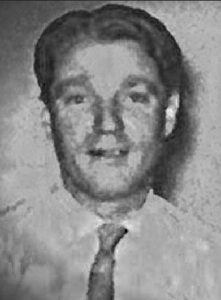 Most people have heard of, and seen, the James Bond movies. Of course, Bond is a fictional British agent, known as 007, and his character has been played by a number of actors over the years, but in reality, he is fictional. Renato Levi, who was also known as CHEESE, MR. ROSE, LAMBERT, EMILE, or ROBERTO, was a Jewish-Italian adventurer and double-agent for the British in World War II. Levi was instrumental in setting up a wireless transmitter in Cairo. The transmitter fed false information to the Axis powers over the course of the war. It was a great tool for the Allies. Unfortunately, Levi was captured and imprisoned shortly after he accomplished his mission. Levi’s “CHEESE” network helped to outflank Rommel at the battle of El Alamein in Egypt, as well as placing other, strategic misinformation that aided the Allies, including at Normandy.
Most people have heard of, and seen, the James Bond movies. Of course, Bond is a fictional British agent, known as 007, and his character has been played by a number of actors over the years, but in reality, he is fictional. Renato Levi, who was also known as CHEESE, MR. ROSE, LAMBERT, EMILE, or ROBERTO, was a Jewish-Italian adventurer and double-agent for the British in World War II. Levi was instrumental in setting up a wireless transmitter in Cairo. The transmitter fed false information to the Axis powers over the course of the war. It was a great tool for the Allies. Unfortunately, Levi was captured and imprisoned shortly after he accomplished his mission. Levi’s “CHEESE” network helped to outflank Rommel at the battle of El Alamein in Egypt, as well as placing other, strategic misinformation that aided the Allies, including at Normandy.
Levi almost always flew under the radar, especially in the British National Archives. Even in recent books about spies and counter-intelligence, the accomplishments of Renato Levi still receive barely a mention and the specifics about his part in all this is often confused. In all reality, Levi’s files have only recently been released, and even then Levi’s, aliases “Cheese,” “Lambert,” or “Mr. Rose” seem to be identified openly only once in his classified dossier. Indeed, in his national documents, there is evidence of redaction everywhere, including Levi’s primary codename “CHEESE” has been carefully handwritten in tiny, blocky letters over white-out, in order to re-establish a place in history.
The CHEESE network, out of Cairo, took a significant hit to its credibility when Levi was arrested and convicted in late 1941 or early 1942. The British came up with an imaginary agent. “Paul Nicossof” was able to regain and retain the trust of the Germans, which is one of the most interesting features of this story. Thanks to the expert manipulations of the British Intelligence operatives controlling the wireless, the CHEESE network was considered credible again by June of 1942…just in time for “A” Force to start planting counter-intelligence prior to the commencement of Operation Bertram at El Alamein in Egypt during October of 1942.
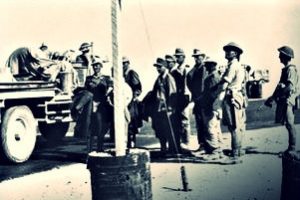 Most interesting to note are the ways that the intelligence operatives used payment schedules…or, rather, the German’s lack of payment to “Paul Nicossof”…to establish credibility about the fictitious informant’s information. “Nicossof” was portrayed as moody and inconsistent, because efforts to pay him were always unsuccessful. His “handlers” credited Germany’s inability to pay “Nicossof” as the way they were able to extend his character beyond the “impasse” that would normally constitute a non-military informant. “Nicossof” could portray himself as the “man who brought Rommel to Egypt,” which would get him paid for his troubles at last, as well as the glory and medals that went with it…all to a fictitious agent!!
Most interesting to note are the ways that the intelligence operatives used payment schedules…or, rather, the German’s lack of payment to “Paul Nicossof”…to establish credibility about the fictitious informant’s information. “Nicossof” was portrayed as moody and inconsistent, because efforts to pay him were always unsuccessful. His “handlers” credited Germany’s inability to pay “Nicossof” as the way they were able to extend his character beyond the “impasse” that would normally constitute a non-military informant. “Nicossof” could portray himself as the “man who brought Rommel to Egypt,” which would get him paid for his troubles at last, as well as the glory and medals that went with it…all to a fictitious agent!!
Perhaps because of the British Intelligence’s efforts to make “Nicossof” convincing and because Levi was so good under duress in prison, the Germans never really lost faith in the CHEESE operative network. They were starved for information, and CHEESE held the only promise for any intelligence about the Middle East. The Germans blamed the Italians for the confinement of their only key agent in the Middle East, Renato Levi. For whatever the reason, the Germans trusted Levi, but he never broke or compromised his duty to the Allied forces.
After looking at these newly declassified documents some people have tried to press Levi into the service of a “Hero Spy” figure, but in reality, Levi was a far more complicated figure and these whitewashed narratives don’t really tell the whole story of Levi’s complexity, nor the complexity of his work. Levi’s story also reveals much about the inner workings of the German Abwehr and the nature of the Italian Intelligence operations. Levi’s British handlers speculated that it was unlikely that the German and Italian Intelligence bureaus had a great deal of communication between them. The Germans were really overly satisfied with Levi’s original purpose of 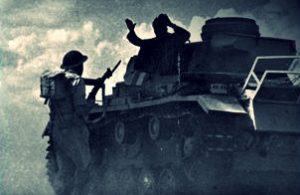 establishing a wireless transmitter network, to their detriment in the end.
establishing a wireless transmitter network, to their detriment in the end.
It seems that Levi’s ultimate fate is unknown. It is true that the CHEESE network was in full swing throughout the war, and many have credited “CHEESE” with hoodwinking the Germans in a big way on many occasions. Perhaps Levi was again affiliated with CHEESE after his release, or maybe not. Regardless, Renato Levi, who had always loved travel, intrigue, and a really good lie, did a remarkable service to the Allied forces by instituting one of the best and most productive counter-intelligence operations of World War II, and he kept it all safe.
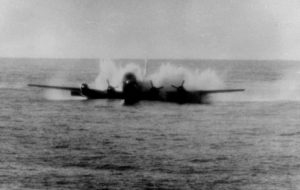 Very few people these days haven’t heard of Captain Chesley B. “Sulley” Sullenberger III and co-pilot Jeff Skiles who made their now famous landing on the Hudson River in New York City after a bird strike left them powerless. We all know that everyone “miraculously” survived that crash landing. It was an undeniable miracle, but it was not the first time such a thing had happened. On October 16, 1956, Pan Am Flight 6, a Boeing 377 Stratocruiser on a nighttime flight from Honolulu to San Francisco, developed engine trouble in one and then two of its four engines. Pan Am Flight 6 was about halfway across the Pacific Ocean at the time and the malfunctioning engine propeller sent the airplane into a descent. I can only imagine the thoughts racing through the minds of the pilots, given the fact that they were not going to find a highway or a field on which to land safely. There was only ocean. This was not the first time a plane had to ditch in the ocean, but I doubt that was any comfort to the men who were flying the plane, since the other ditching events had fatalities.
Very few people these days haven’t heard of Captain Chesley B. “Sulley” Sullenberger III and co-pilot Jeff Skiles who made their now famous landing on the Hudson River in New York City after a bird strike left them powerless. We all know that everyone “miraculously” survived that crash landing. It was an undeniable miracle, but it was not the first time such a thing had happened. On October 16, 1956, Pan Am Flight 6, a Boeing 377 Stratocruiser on a nighttime flight from Honolulu to San Francisco, developed engine trouble in one and then two of its four engines. Pan Am Flight 6 was about halfway across the Pacific Ocean at the time and the malfunctioning engine propeller sent the airplane into a descent. I can only imagine the thoughts racing through the minds of the pilots, given the fact that they were not going to find a highway or a field on which to land safely. There was only ocean. This was not the first time a plane had to ditch in the ocean, but I doubt that was any comfort to the men who were flying the plane, since the other ditching events had fatalities.
Pan Am World Airways first started flying in 1927, delivering mail between Florida and Cuba. The carrier was based out of New York City for nearly 30 years, until it went out of business in 1991. The airline left a legacy of firsts. “It was first across the Atlantic, first with flights across the Pacific and the first to offer around-the-world service,” said Kelly Cusack, the curator of the Pan Am Museum Foundation. Most airlines celebrate a lot of their firsts, but there is one first that no airline wants to celebrate, or have on their list of firsts at all…a crash. Nevertheless, on October 16, 1956, a crash was exactly what was going to happen. This crash took place 53 years before “Sulley’s” famous water landing into the Hudson River. “This is a particularly memorable and a proud part of our legacy because of two words: happy ending,” said Jeff Kriendler, who was Pan Am’s vice president for corporate communications in the 1980s and has written several anthologies about the airline. Airlines have ditched in the ocean before, but this was the first to do so with no fatalities. Like “Sulley’s” famous flight, ditching in the ocean without fatalities…was unheard of. Unlike “Sulley’s” landing, which was caught on camera, a nighttime flight in the middle of the ocean in 1956 was not likely to be caught on camera.
The flight started out smoothly, but then developed engine trouble in one, and then two of its four engines. Pan 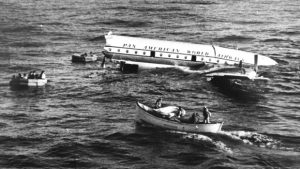 Am Flight 6 was about halfway across the Pacific Ocean at the time and the malfunctioning engine propeller sent the airplane into a descent. The decision to land the plane in the sea with 24 passengers and seven crew members aboard was not made until all other options had been considered. Captain Richard Ogg, the pilot, wrote an account of the episode a year later, saying that he had to weigh many factors. Should he jettison fuel and try to land on the water immediately or fly until daylight provided better visibility? One thing was clear, the bad propeller was causing the plane to burn fuel too fast. He would not make it to San Francisco or Honolulu. Apparently, it was no coincidence that the ship was nearby. In the early days of long flights over water, Coast Guard ships were positioned in the Pacific and the Atlantic Oceans, offering weather information to flight crews and relaying radio messages, according to Doak Walker, a Coast Guard historian who participated in the rescue of Flight 6. In preparation, the cutters were placed near what was expected to be the point of no return. That is the area where a plane would have burned too much fuel to turn back in case of an emergency.
Am Flight 6 was about halfway across the Pacific Ocean at the time and the malfunctioning engine propeller sent the airplane into a descent. The decision to land the plane in the sea with 24 passengers and seven crew members aboard was not made until all other options had been considered. Captain Richard Ogg, the pilot, wrote an account of the episode a year later, saying that he had to weigh many factors. Should he jettison fuel and try to land on the water immediately or fly until daylight provided better visibility? One thing was clear, the bad propeller was causing the plane to burn fuel too fast. He would not make it to San Francisco or Honolulu. Apparently, it was no coincidence that the ship was nearby. In the early days of long flights over water, Coast Guard ships were positioned in the Pacific and the Atlantic Oceans, offering weather information to flight crews and relaying radio messages, according to Doak Walker, a Coast Guard historian who participated in the rescue of Flight 6. In preparation, the cutters were placed near what was expected to be the point of no return. That is the area where a plane would have burned too much fuel to turn back in case of an emergency.
Ogg opted to fly an eight-mile circuit above the Pontchartrain until morning while planning for the water landing. Remembering that during another Pan Am Stratocruiser ditching, the tail had broken off, Ogg had the passengers in the back of the plane move forward and asked those seated by the engine to move as well. “We will try to stay aloft until daylight,” Ogg radioed to the Pontchartrain. When the passengers learned the flight would circle and not attempt to land in the dark, “it gave them a lot of confidence,” said Frank Garcia, 91, the flight engineer and a guest of honor at the Pan Am event. Passengers were also comforted knowing “someone was out there waiting to give them as much aid as they can,” Garcia said. Standing watch on the cutter just after 8 a.m., Walker, 83, recalled that “the seas were extremely calm and the weather was good and we were hoping there wouldn’t be much of a problem.”
Just as Ogg had expected, the tail broke off as soon as the plane hit the sea. Then the nose of the airliner went under the water. “I felt as if somebody had grabbed the seat of my pants and was pulling,” Garcia said. “I saw the water. I was more frightened if the windows broke, then the water would come in.” From the cockpit,  all Garcia saw was water. “I can’t tell you how many seconds, it was less than a minute, and I saw the water receding,” Garcia said, as the front of plane surfaced. On the Pontchartrain many thought they had just witnessed a disaster, Walker said. “It was so sad,” he said. “We knew nobody could survive that.” Rescue boats sped toward the plane, while other Coast Guardsmen filmed the event. Captured moments included life rafts bobbing by the aircraft’s fuselage, transferring survivors to rescue boats, the sinking plane, and the lifting of twin toddlers, Maureen and Elizabeth Gordon, from a lifeboat into waiting seamen’s arms. And, everyone was saved. It was a miracle at sea.
all Garcia saw was water. “I can’t tell you how many seconds, it was less than a minute, and I saw the water receding,” Garcia said, as the front of plane surfaced. On the Pontchartrain many thought they had just witnessed a disaster, Walker said. “It was so sad,” he said. “We knew nobody could survive that.” Rescue boats sped toward the plane, while other Coast Guardsmen filmed the event. Captured moments included life rafts bobbing by the aircraft’s fuselage, transferring survivors to rescue boats, the sinking plane, and the lifting of twin toddlers, Maureen and Elizabeth Gordon, from a lifeboat into waiting seamen’s arms. And, everyone was saved. It was a miracle at sea.
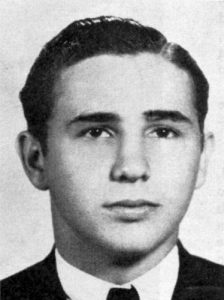 Sometimes, it’s a close call that saves the life of a person, because a difference of inches could have meant the difference between life and death. That was the case for young Corporal Adolf Hitler when he was temporarily blinded on October 14, 1918, by a gas shell that was close enough to temporarily blind him, but unfortunately for the rest of the world, not close enough to kill him. The British shell was part of an attack at Ypres Salient in Belgium, and in the aftermath, Hitler found himself evacuated to a German military hospital at Pasewalk, in Pomerania. Of course, Hitler considered this a great good fortune, with the exception of the temporary blindness. I find myself wishing that the shell had been closer, because the difference of inches could have changed the world, and especially the victims of the Holocaust.
Sometimes, it’s a close call that saves the life of a person, because a difference of inches could have meant the difference between life and death. That was the case for young Corporal Adolf Hitler when he was temporarily blinded on October 14, 1918, by a gas shell that was close enough to temporarily blind him, but unfortunately for the rest of the world, not close enough to kill him. The British shell was part of an attack at Ypres Salient in Belgium, and in the aftermath, Hitler found himself evacuated to a German military hospital at Pasewalk, in Pomerania. Of course, Hitler considered this a great good fortune, with the exception of the temporary blindness. I find myself wishing that the shell had been closer, because the difference of inches could have changed the world, and especially the victims of the Holocaust.
Like many young men of the period, Hitler was drafted for Austrian military service, but when he reported, he was turned down due to lack of fitness. In the summer of 1914, Hitler had moved to Munich. When World War I began, he asked for and received special permission to enlist as a German soldier. It all seemed like a noble thing to do. Hitler was a member of the 16th Bavarian Reserve Infantry Regiment. He traveled to France in October 1914. There, he saw heavy action during the First Battle of Ypres, earning the Iron Cross that December for dragging a wounded comrade to safety. These things rather surprise me, give Hitler’s reputation for thinking only of himself.
Over the course of the next two years, Hitler took part in some of the fiercest struggles of the war, including 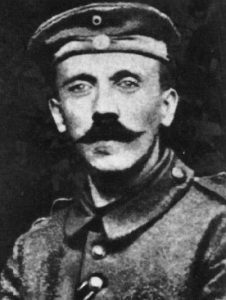 the Battle of Neuve Chapelle, the Second Battle of Ypres and the Battle of the Somme. He was wounded in the leg by a shell blast on October 7, 1916, near Bapaume, France. Following his hospital stay. Hitler was sent to recover near Berlin, after which he returned to his old unit by February 1917. According to Hans Mend, a comrade of Hitler, he was given to rants on the dismal state of morale and dedication to the cause on the home front in Germany. According to Mend, “He sat in the corner of our mess holding his head between his hands in deep contemplation. Suddenly he would leap up, and running about excitedly, say that in spite of our big guns victory would be denied us, for the invisible foes of the German people were a greater danger than the biggest cannon of the enemy.” It would seem that Hitler’s crazed mind was beginning to present itself. As I look at a picture of Hitler as a young man, I wonder what happened to him that changed him so much. Yung Hitler didn’t look like the crazed, evil dictator the world knew
the Battle of Neuve Chapelle, the Second Battle of Ypres and the Battle of the Somme. He was wounded in the leg by a shell blast on October 7, 1916, near Bapaume, France. Following his hospital stay. Hitler was sent to recover near Berlin, after which he returned to his old unit by February 1917. According to Hans Mend, a comrade of Hitler, he was given to rants on the dismal state of morale and dedication to the cause on the home front in Germany. According to Mend, “He sat in the corner of our mess holding his head between his hands in deep contemplation. Suddenly he would leap up, and running about excitedly, say that in spite of our big guns victory would be denied us, for the invisible foes of the German people were a greater danger than the biggest cannon of the enemy.” It would seem that Hitler’s crazed mind was beginning to present itself. As I look at a picture of Hitler as a young man, I wonder what happened to him that changed him so much. Yung Hitler didn’t look like the crazed, evil dictator the world knew
Hitler continued to earn citations for bravery over the next year, including an Iron Cross 1st Class for “personal bravery and general merit” in August 1918 for single-handedly capturing a group of French soldiers hiding in a shell hole during the final German offensive on the Western Front. Then, on October 14, 1918, Hitler received the injury that put an end to his service in World War I. He learned of the German surrender while recovering at Pasewalk. Hitler was furious and frustrated by the news. He said, “I staggered and stumbled back to my  ward and buried my aching head between the blankets and pillow.” Hitler felt he and his fellow soldiers had been betrayed by the German people. I’m amazed that he did not put them in the camps too. In 1941, Hitler as Führer would reveal the degree to which his career and its terrible legacy had been shaped by the World War I, writing that “I brought back home with me my experiences at the front; out of them I built my National Socialist community.”
ward and buried my aching head between the blankets and pillow.” Hitler felt he and his fellow soldiers had been betrayed by the German people. I’m amazed that he did not put them in the camps too. In 1941, Hitler as Führer would reveal the degree to which his career and its terrible legacy had been shaped by the World War I, writing that “I brought back home with me my experiences at the front; out of them I built my National Socialist community.”
When I think of what might have been, but for a difference of inches, I find it very ironic. If that shell had hit just a few inches closer, perhaps Hitler would have died a hero in his nation, before he could become the epitome of evil…to the world, and to many of his own people. I suppose World War I and II, as well as the other wars, would have still happened, but maybe, quite likely, the Holocaust would not have happened. Just a few inches. If only.
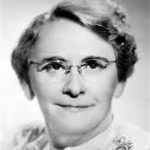
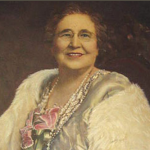 Unfortunately, not every life story is a perfect one. There are among us, who embrace evil, greed, and selfishness, as well as the need to promote themselves as far more important than they are, or ever should be allowed to be. Georgia Tann was purported to be the face of modern adoption practices. She supposedly changed the view of orphan children, from unworthy of better circumstances to simply victims of circumstance who could go on to greatness, if given the chance. She had the backing of many of the prominent members of Memphis society, and officials including Shelby County Juvenile Court Judge Camille Kelley. In reality, Tann operated a horrific human trafficking operation under the name of the Tennessee Children’s Home Society (not to be confused with the legally operated Tennessee Children’s Home) from 1924 to 1950. The non-profit corporation might have been legitimate when first chartered in 1897. Beulah George Tann was born in July 18, 1891, so she was too young to bring her evil into the society when it first began, and didn’t work there when the charter was renewed in 1913, but it was under her leadership that it became an illegal adoption agency.
Unfortunately, not every life story is a perfect one. There are among us, who embrace evil, greed, and selfishness, as well as the need to promote themselves as far more important than they are, or ever should be allowed to be. Georgia Tann was purported to be the face of modern adoption practices. She supposedly changed the view of orphan children, from unworthy of better circumstances to simply victims of circumstance who could go on to greatness, if given the chance. She had the backing of many of the prominent members of Memphis society, and officials including Shelby County Juvenile Court Judge Camille Kelley. In reality, Tann operated a horrific human trafficking operation under the name of the Tennessee Children’s Home Society (not to be confused with the legally operated Tennessee Children’s Home) from 1924 to 1950. The non-profit corporation might have been legitimate when first chartered in 1897. Beulah George Tann was born in July 18, 1891, so she was too young to bring her evil into the society when it first began, and didn’t work there when the charter was renewed in 1913, but it was under her leadership that it became an illegal adoption agency.
Tann preyed upon people who had lost their jobs due to the depression, as well as single mothers, telling them that she could help them by taking the children temporarily, until they could get back on their feet. When the parents tried to reclaim their children, they found out that they had been adopted. The parents tried to fight Tann in court, but the courts rules in favor of the Tennessee Children’s Home Society…but she didn’t stop there. She had her people take children off the streets, and even their own front porches. The children were listed as abused, neglected, or abandoned. Their names and birthdates were changed to make tracking difficult…records were routinely destroyed. She also had parents sign forms they did not understand when their babies were born, often while mothers were still under medication, saying that this would let the county pay for the birth. Parents were then told the babies had died. When their older children were taken away, they found out that they had also signed away the rights to their them too. There were many corrupt officials involved in this. The corruption ran deep, and everyone covered up for everyone else in the ring.



The problem the children faced after being removed from the protection of their parents, who love them; is that the people who take them do not value the heart, mind, and bodies of these children. The children kept there were routinely malnourished, beaten, imprisoned, and abused…in every sense of the word. They were not allowed to go to school, and they were taken to viewing parties so potential…rich parents could take the ones they liked. Tann took children from poor people and gave them to “high-types” of people…for a price, of course. The cost of the adoptions was high and there were additional fees is the child had to be transported to another state. Only the rich could afford them. Tann pocketed the lion’s share of the fees received, and she lived well, while the children often survived on cornmeal mush. It is estimated that over 500 children died in the group homes run by Georgia Tann. Some were buried in mass graves. The final resting place of many others is unknown.
Tann’s rich parents were victims too. They had unknowingly adopted children who shouldn’t have been up for adoption. If they found out what she had done, Tann blackmailed them into silence. Actress, Joan Crawford’s twin daughters Cathy and Cynthia were adopted through the agency. Actors, June Allyson and husband Dick Powell also used the Memphis-based home for adopting a child. Professional wrestler Ric Flair was stolen from his birth mother and placed for adoption. Auto racer Gene Tapia had a son stolen by the agency. A 1950 state investigation found that Tann had arranged for thousands of adoptions under questionable means. State investigators discovered that the Society was a front for a broad black market adoption ring, headed by Tann. They also found record irregularities and secret bank accounts. In some cases, Tann skimmed as much as 80 to 90% of the adoption fees when children were placed out of state. Officials found that Judge Camille Kelley had 
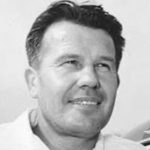 railroaded through hundreds of adoptions without following state laws. Kelley received payments from Tann for her assistance. Tann died in the fall of 1950, before the case could go to trial. Kelley announced that she would retire after 20 years on the bench. Kelley was not prosecuted for her role in the scandal and died in 1955. Over the years that Tann headed up the Tennessee Children’s Home Society, she amassed at least 5,000 victims. The true number will most likely never be known, and in reality, continues to grow with each generation of children born, who will never know their true heritage.
railroaded through hundreds of adoptions without following state laws. Kelley received payments from Tann for her assistance. Tann died in the fall of 1950, before the case could go to trial. Kelley announced that she would retire after 20 years on the bench. Kelley was not prosecuted for her role in the scandal and died in 1955. Over the years that Tann headed up the Tennessee Children’s Home Society, she amassed at least 5,000 victims. The true number will most likely never be known, and in reality, continues to grow with each generation of children born, who will never know their true heritage.

